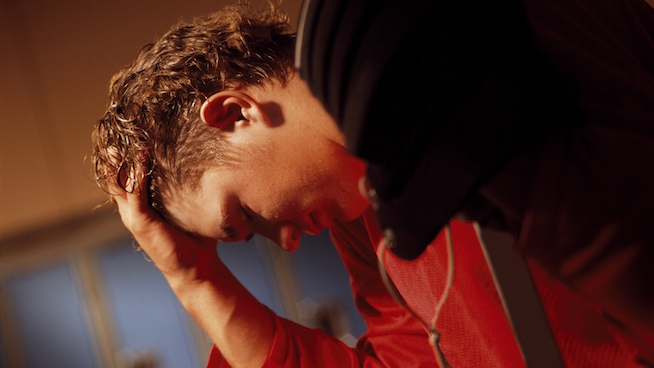How to Train for a Firefighter Academy: Cardiovascular Endurance
Fire suppression places a high amount of mental and physical stress on firefighters. Since the demands are so high, fire recruits entering a training academy are selected for their above-average physical fitness.
Studies have shown that high levels of cardiovascular training, resistance training and flexibility training allow firefighters to perform their jobs more safely and effectively. However, many firefighters are no fitter than the average couch potato. In fact, some firefighters are overweight and have high levels of cholesterol, which can potentially lead to cardiac disease.
Preparing for a career in the fire service starts before entering the academy. Recruits need to prepare physically to withstand the strenuous demands and extreme working conditions. All candidates must be in good physical condition. Recruits unable to perform firefighting tasks due to a lack of physical conditioning are usually not even accepted into an academy. Some who are accepted lack sufficient endurance to fight a fire. (Learn more ways to build endurance.)
Generally, firefighter academy training focuses on cardiovascular endurance and muscular endurance, but these are not the best approaches to meet the demands of firefighting. Instead, high intensity interval training (HIIT) and circuit weight training have been shown to significantly increase physical performance in firefighter cadets. (Do this HIIT Rip Trainer workout.) Thus, it is important that both aerobic and anaerobic workouts be part of an aspiring firefighter’s training program.
Many fire academies require a physical fitness assessment, which vary from academy to academy. The most common is a 1.5-mile run test. It is recommended that fire recruits have a VO2 Max of at least 45 ml/kg/minute upon entry to an academy. This equates to 12 minutes in the 1.5-mile run test.
To begin preparing for entry into a fire academy, first assess your 1.5-mile run six weeks prior to your start. Once you have your baseline time, focus on improving it. If you do not meet the 12-minute time, try incorporating tough intervals runs to increase your overall cardiovascular endurance. The better shape you are in before entering the academy, the better chance you will have to succeed. Remember, this is a life-long career, so make sure you prepare well in advance.
Here are some examples of workouts that will help you improve your overall endurance, so you will be in the best shape possible for the academy.
Interval Runs
- 6x400m with a three-minute rest between runs
- 3x1200m with an eight-minute rest between runs
Although not all departments require an entrance physical, recruits should consult their doctors before starting any exercise program.
RECOMMENDED FOR YOU
How to Train for a Firefighter Academy: Cardiovascular Endurance
Fire suppression places a high amount of mental and physical stress on firefighters. Since the demands are so high, fire recruits entering a training academy are selected for their above-average physical fitness.
Studies have shown that high levels of cardiovascular training, resistance training and flexibility training allow firefighters to perform their jobs more safely and effectively. However, many firefighters are no fitter than the average couch potato. In fact, some firefighters are overweight and have high levels of cholesterol, which can potentially lead to cardiac disease.
Preparing for a career in the fire service starts before entering the academy. Recruits need to prepare physically to withstand the strenuous demands and extreme working conditions. All candidates must be in good physical condition. Recruits unable to perform firefighting tasks due to a lack of physical conditioning are usually not even accepted into an academy. Some who are accepted lack sufficient endurance to fight a fire. (Learn more ways to build endurance.)
Generally, firefighter academy training focuses on cardiovascular endurance and muscular endurance, but these are not the best approaches to meet the demands of firefighting. Instead, high intensity interval training (HIIT) and circuit weight training have been shown to significantly increase physical performance in firefighter cadets. (Do this HIIT Rip Trainer workout.) Thus, it is important that both aerobic and anaerobic workouts be part of an aspiring firefighter’s training program.
Many fire academies require a physical fitness assessment, which vary from academy to academy. The most common is a 1.5-mile run test. It is recommended that fire recruits have a VO2 Max of at least 45 ml/kg/minute upon entry to an academy. This equates to 12 minutes in the 1.5-mile run test.
To begin preparing for entry into a fire academy, first assess your 1.5-mile run six weeks prior to your start. Once you have your baseline time, focus on improving it. If you do not meet the 12-minute time, try incorporating tough intervals runs to increase your overall cardiovascular endurance. The better shape you are in before entering the academy, the better chance you will have to succeed. Remember, this is a life-long career, so make sure you prepare well in advance.
Here are some examples of workouts that will help you improve your overall endurance, so you will be in the best shape possible for the academy.
Interval Runs
- 6x400m with a three-minute rest between runs
- 3x1200m with an eight-minute rest between runs
Although not all departments require an entrance physical, recruits should consult their doctors before starting any exercise program.











